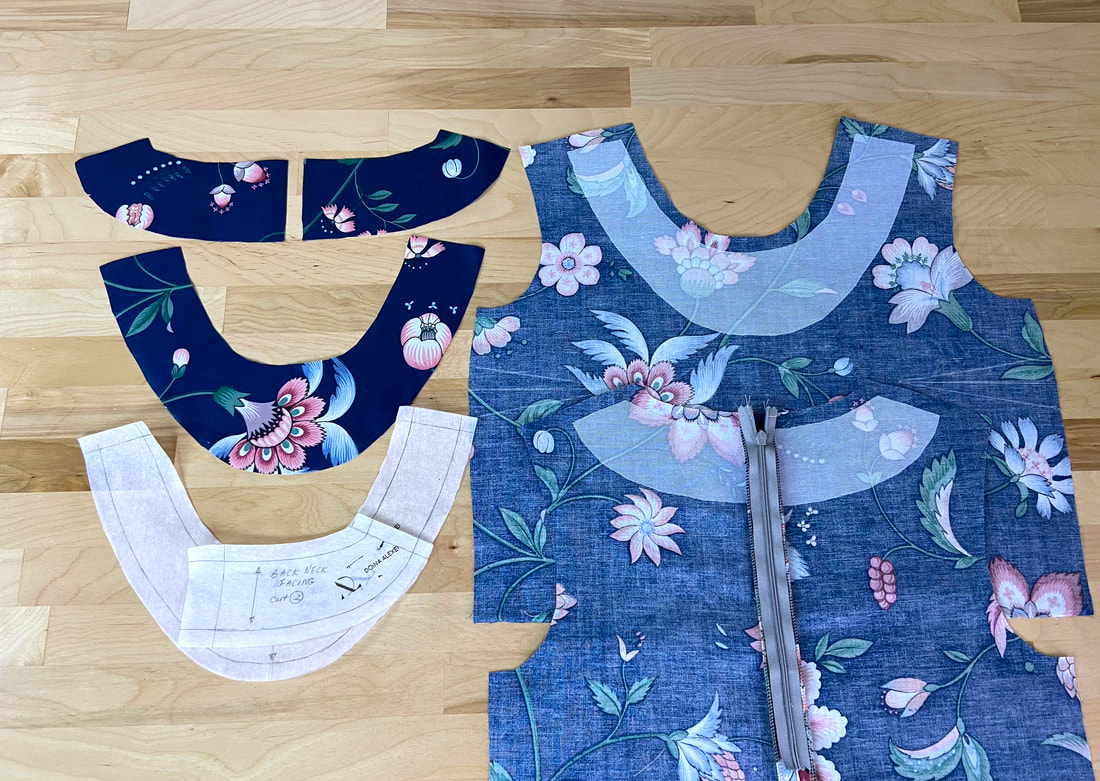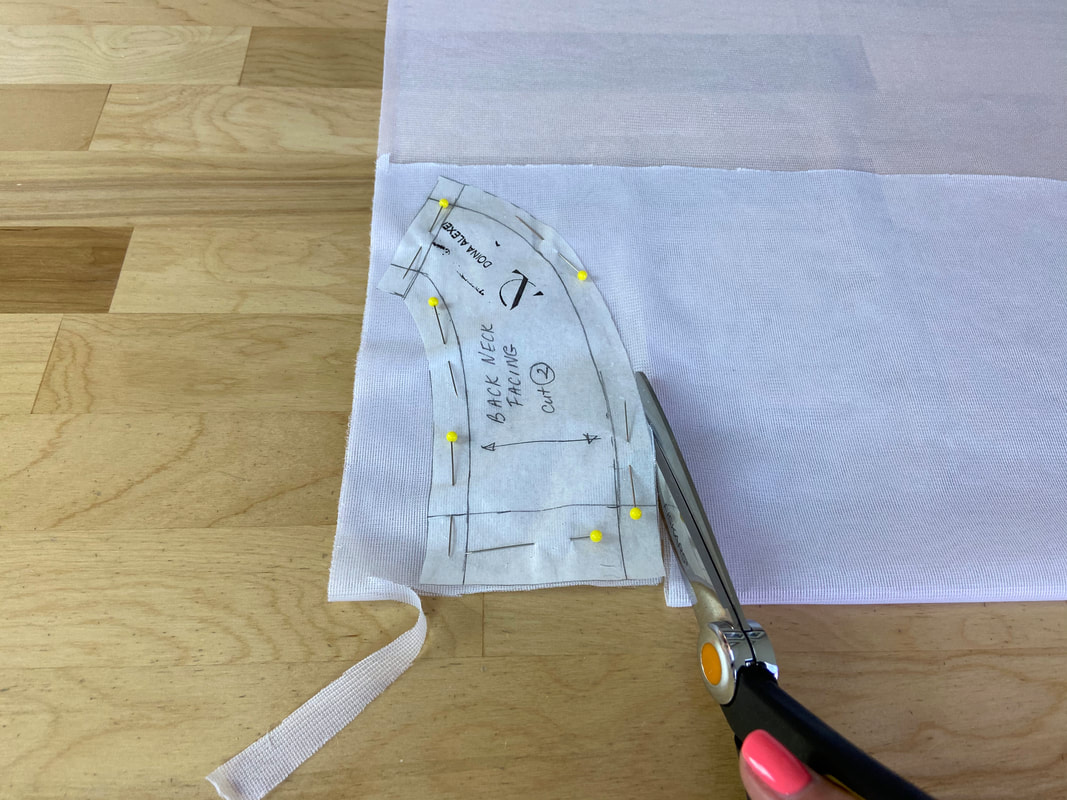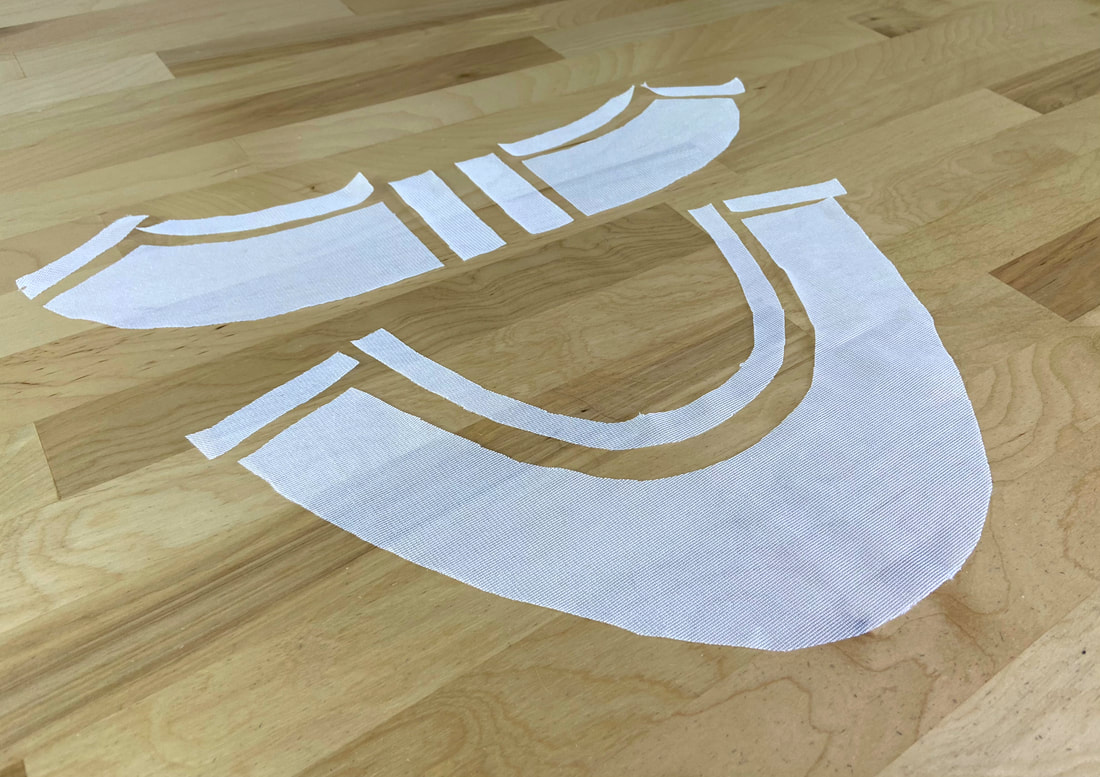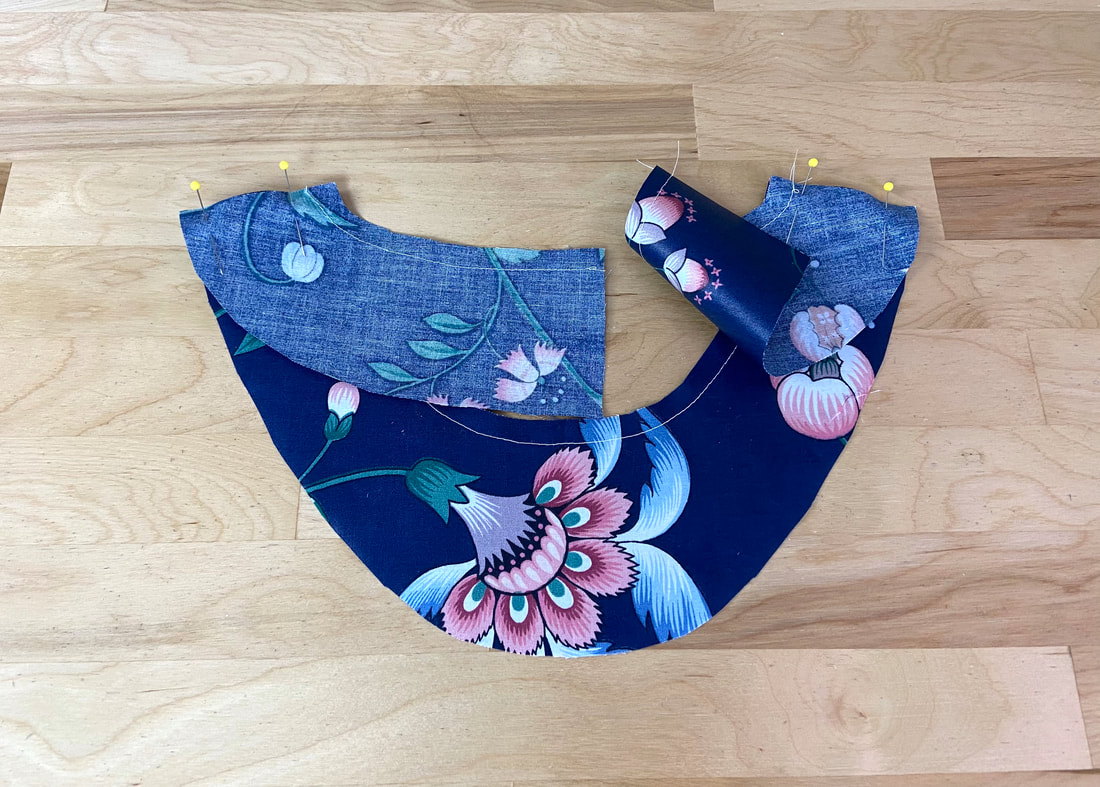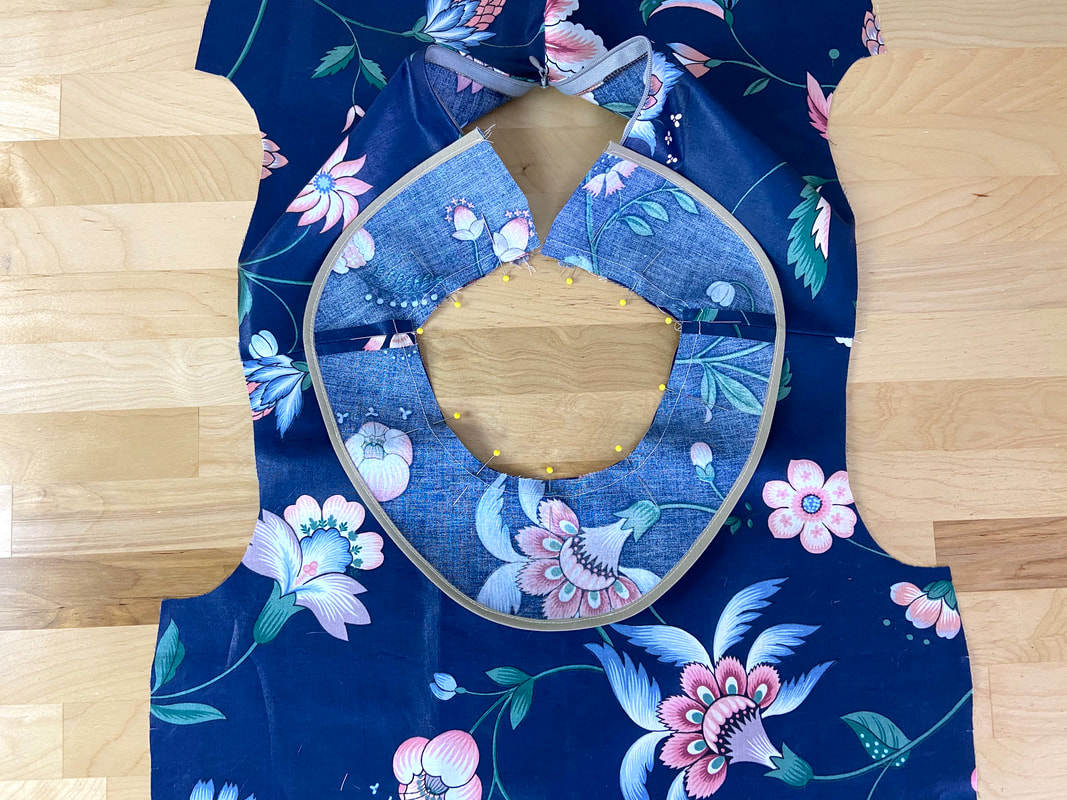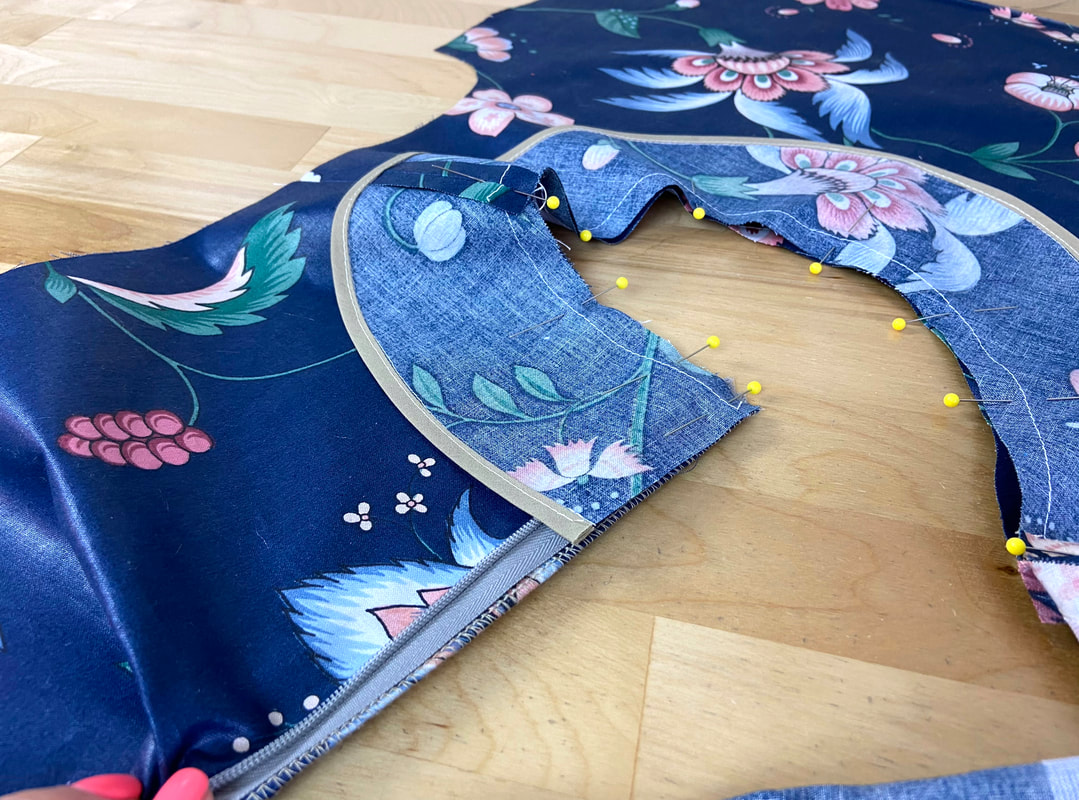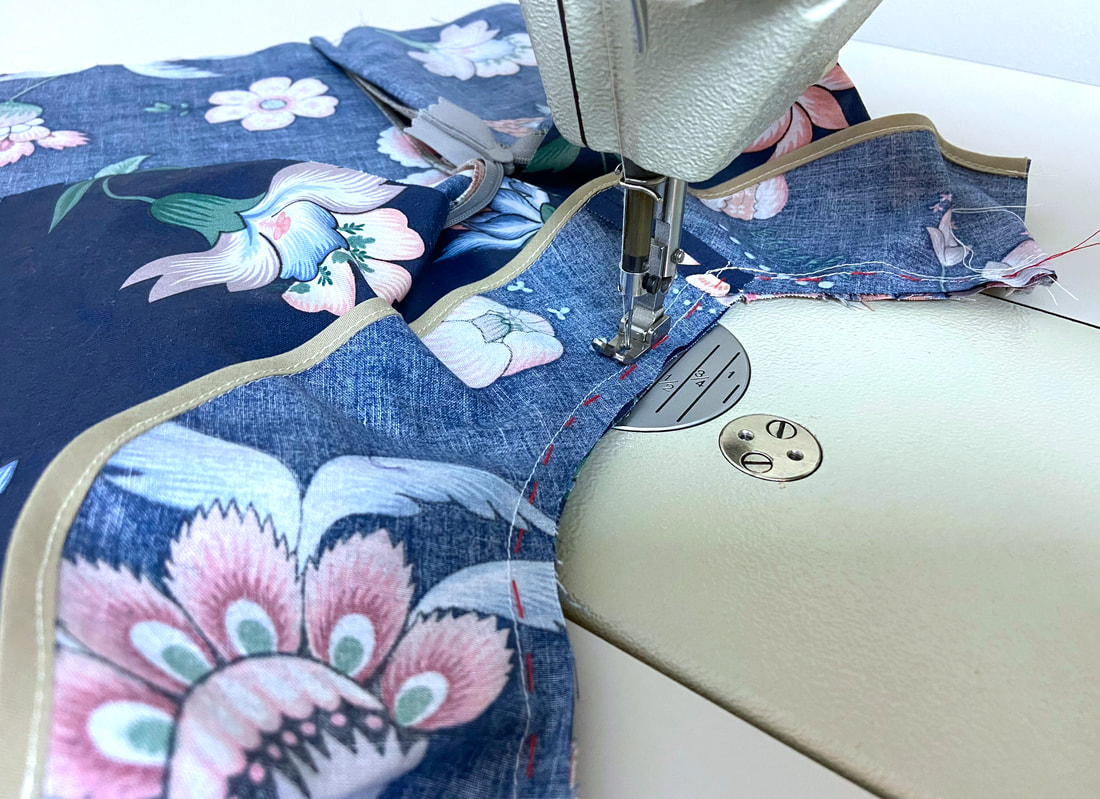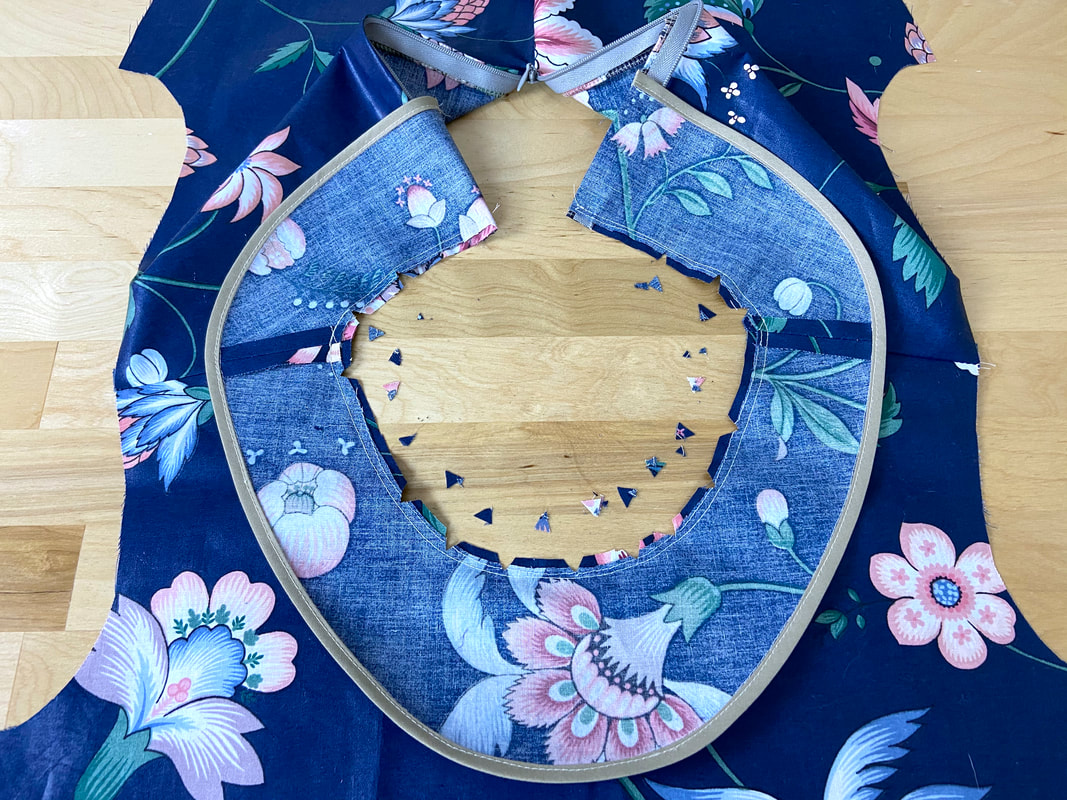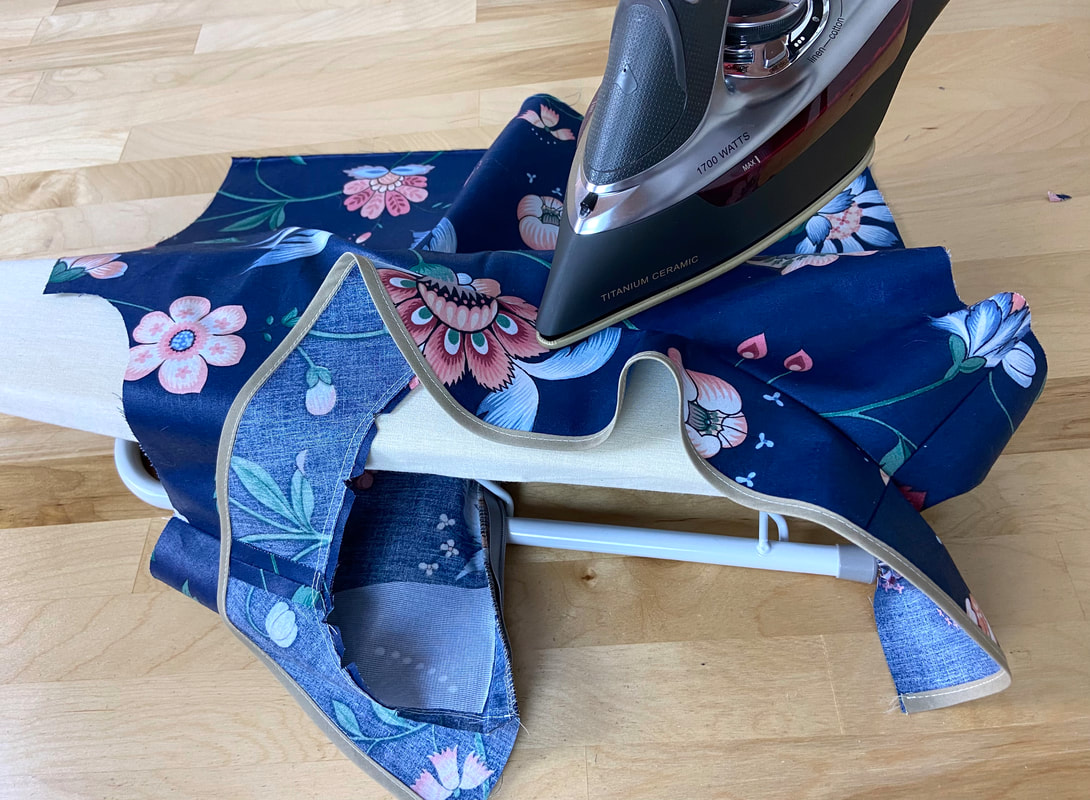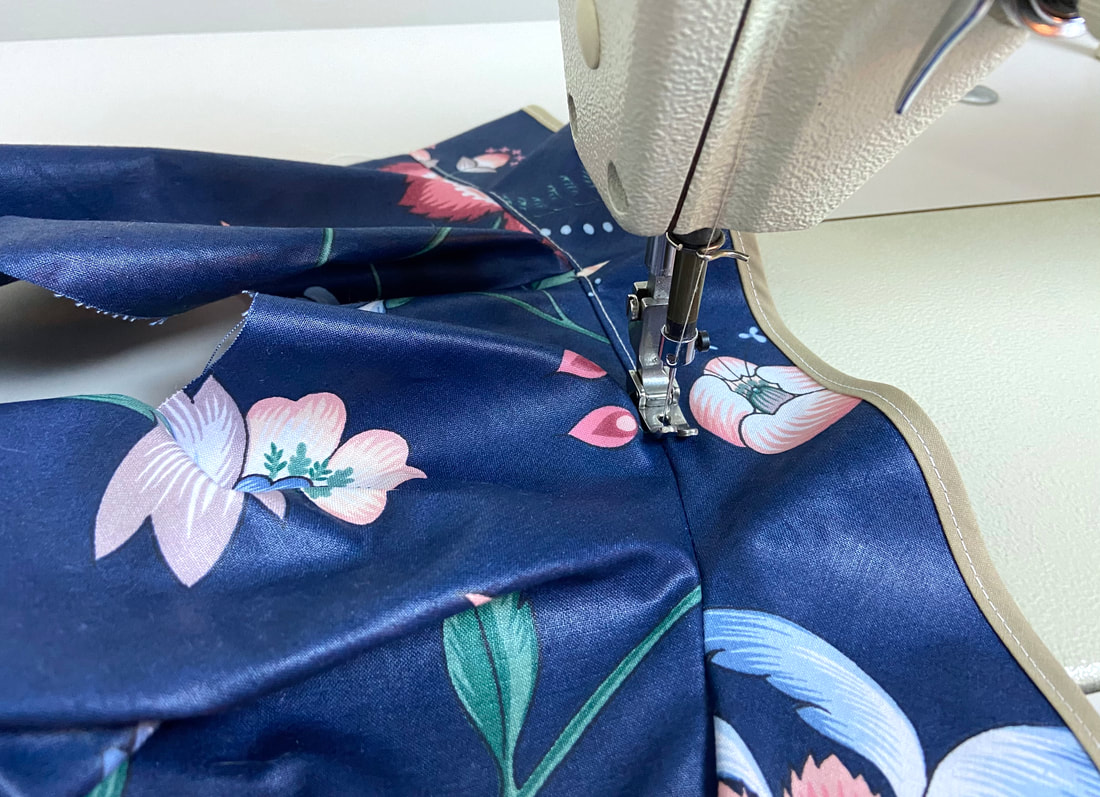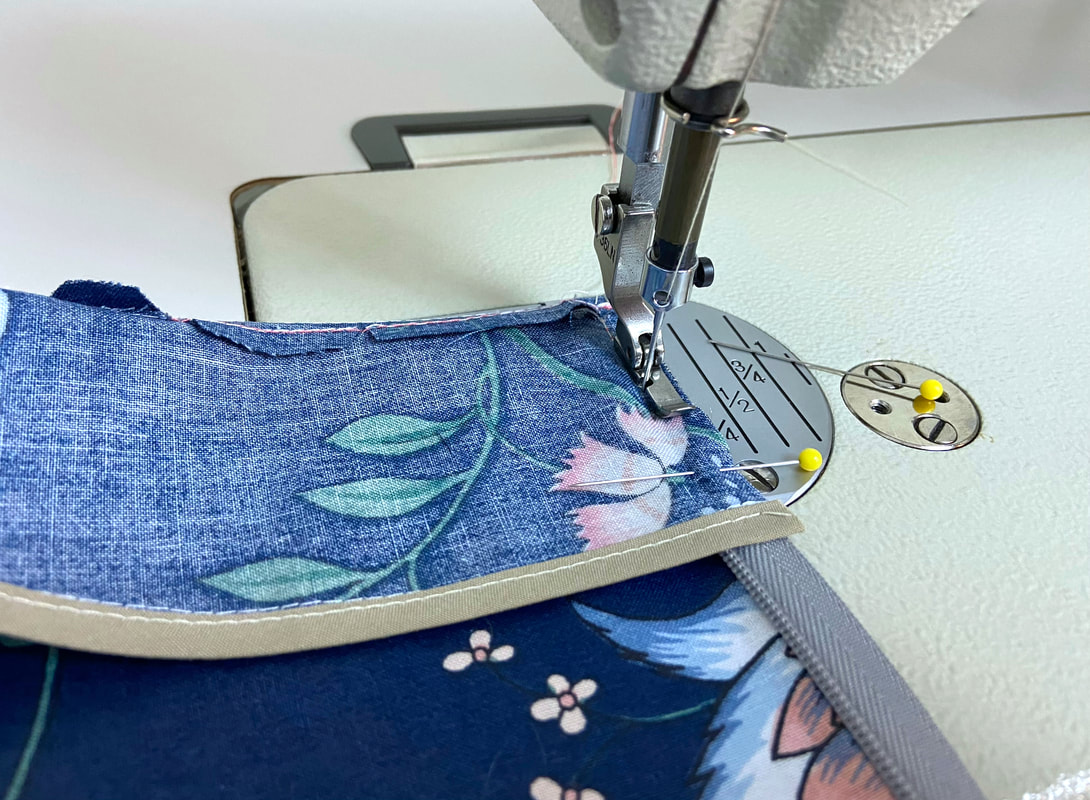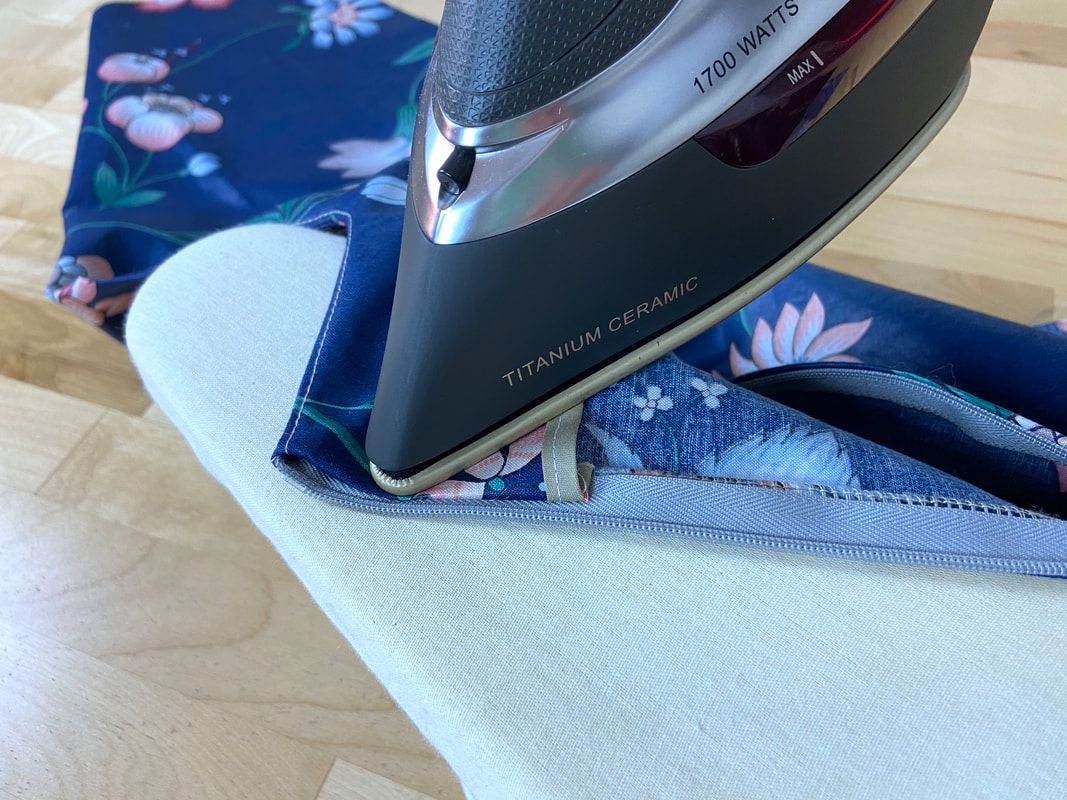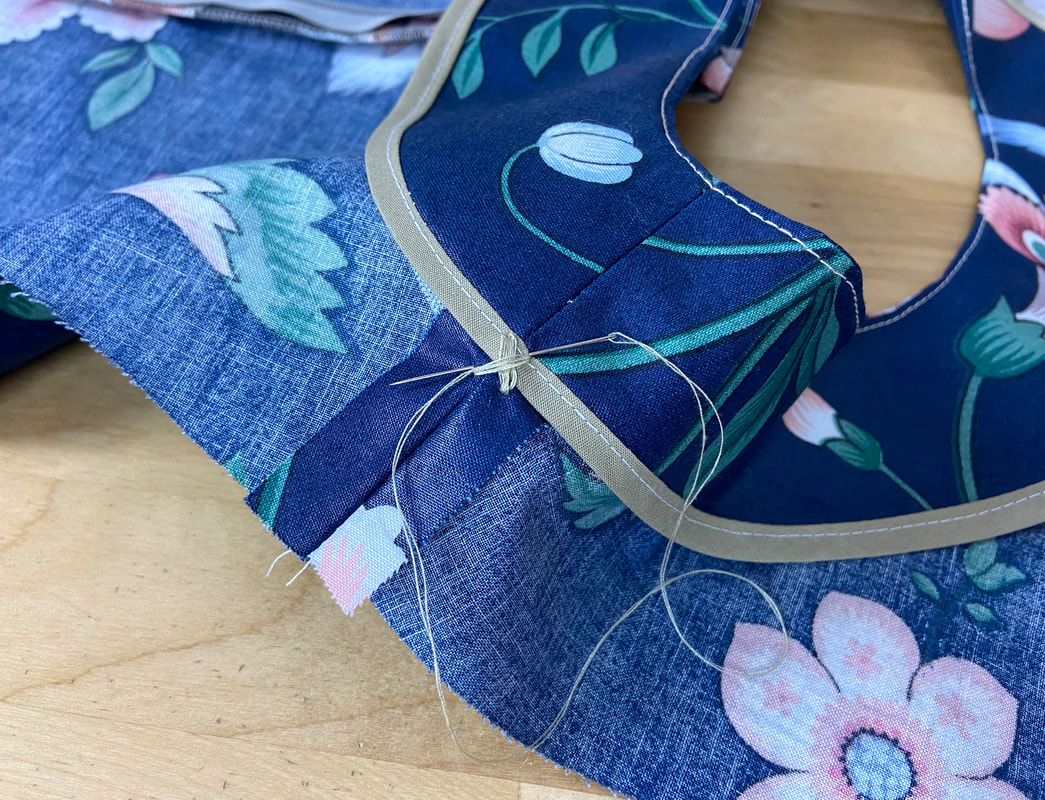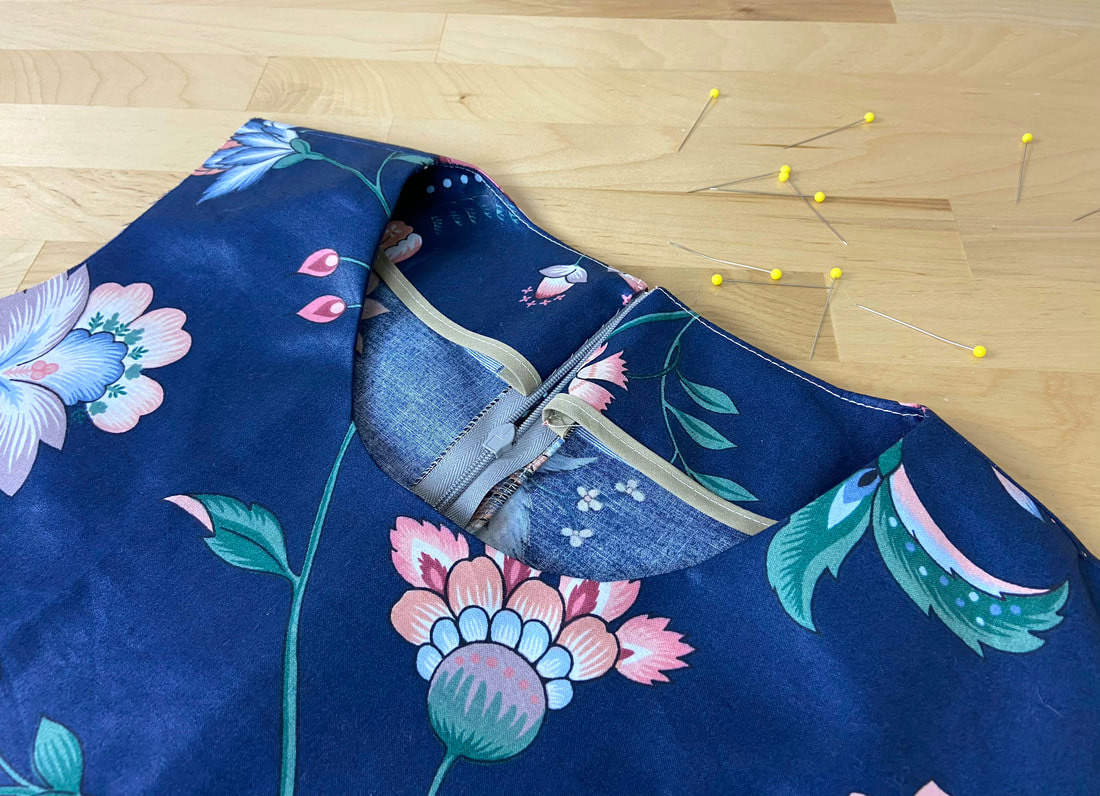Mini Tutorial: How To Sew A Curved Neck Shaped Facing
A shaped facing application requires separate sewing patterns for the facing pieces. These should be provided in your pattern set but if they are not, you can use the main garment patterns to draft your own facing patterns using the neckline edges as a guide.
1. Start by cutting your front and back facing pieces. Interface the wrong side of the garment layers as described below:
Using the facing patterns, cut matching fusible interfacing pieces. Trim the seam allowance off each interfacing piece and fuse to the wrong side of the garment along each corresponding front and back edge.
2. Align the front and back facing layers with fabric right sides touching and the shoulder seam edges aligning, and insert pins perpendicular to the edge (as shown).
Note: Prior to aligning and stitching the facing's shoulder seams, you should staystitch the facing's curved neckline edges to prevent them from stretching and loosing their shape during the construction process. A staystitch is a simple straight stitch applied within the seam allowance area to stabilize curved, vulnerable edges- this stitch is purely functional and should not be visible on the garment's right side.
Note: Prior to aligning and stitching the facing's shoulder seams, you should staystitch the facing's curved neckline edges to prevent them from stretching and loosing their shape during the construction process. A staystitch is a simple straight stitch applied within the seam allowance area to stabilize curved, vulnerable edges- this stitch is purely functional and should not be visible on the garment's right side.
3. Stitch the shoulder seams and iron them with the seam allowance layers flat. Prior to attaching the facing to the garment, clean finish its outer edge using the technique of your choice. You can use a serging or zigzag stitch or a bias bound finish.
Note: Clean finish this outer edge only if your garment is unlined and the edge will be left exposed on the garment's wrong side.
Note: Clean finish this outer edge only if your garment is unlined and the edge will be left exposed on the garment's wrong side.
4. Stitch and iron the the garment's shoulder seams, and lay the garment flat on the table with garment's right side facing up. Place the facing compartment down such that fabric right sides are touching and all edges align. Align the garment's shoulder seams to those of the facing. Insert pins perpendicular to the edges to secure the layers in this position.
If you do not feel comfortable stitching curved seams, it helps to replace the pins with a hand basting stitch as this will keep the layers perfectly aligned during the machine stitching process.
If you do not feel comfortable stitching curved seams, it helps to replace the pins with a hand basting stitch as this will keep the layers perfectly aligned during the machine stitching process.
5. If your garment has an invisible zipper closure, extend the zipper seam layer flat and align the facing end with the seam allowance edge as pictured above. In this position, the zipper tape should be sandwiched in between the two layers.
6. Stitch the neckline edges at the designed seam allowance (1/2" in this case) keeping the curved stitch as smooth and even as you can.
7. To release tension in the finished faced edge, clip wedge notches into the curved seam allowance layers. If your fabric is thick and bulky, you should also consider grading the seam allowance by trimming the facing seam allowance layer down to half its width as pictured above,
8. Iron the finished seam with the facing and all seam allowance layers directed away from the garment.
9. Topstitch directly on the facing and seam allowance layers underneath at about 1/8" away from the seam. This is called understitching and it will prevent the facing layer from rolling to the outside of the garment in the finished application, as well as encourage the finished faced edge to lay flat.
10. To complete the facing at the zipper opening, align the facing edge with the zipper seam allowance edge such that fabric right sides are touching and the zipper tape is sandwiched in between. Insert pins perpendicular to the edges to secure. Using a zipper foot, stitch down the center of the seam allowance layers.
11. Flip the facing to the wrong side of the garment and iron the folded edge created by the facing layer at the zipper opening. Additionally, iron the finished neckline edge for a smooth, professional finish.
12. To secure the facing layer in perfect position and prevent it from shifting out of alignment, hand-tack the facing edge at each seam, inserting the stitch only through the seam allowance layers and facing edge. The final stitch should not be visible on the garment's right side.
The finished faced neckline should lay flat and smooth, and feature a well-defined curved edge.

